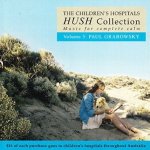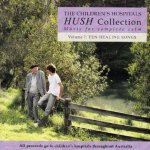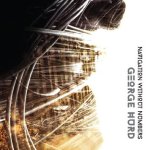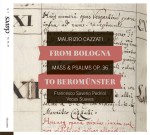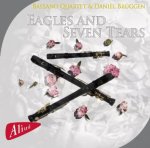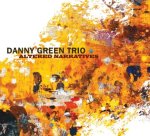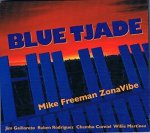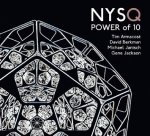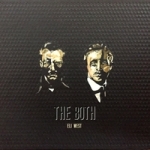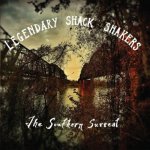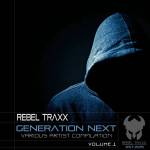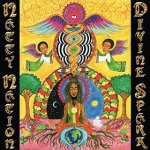PICK OF THE MONTH
 Various Composers
Various Composers
Baltic Voices (reissue; 3 discs)
Estonian Philharmonic Chamber Choir / Paul Hillier
Harmonia Mundi (dist. PIAS)
First of all, let’s be very clear on what this package is: it’s a straight reissue of three discs originally released individually as volumes one through three in the series Baltic Voices. There’s no new content here, and the packaging has been only minimally changed (the original discs, with new tray cards but the original booklets, are bundled together in a cardboard slipcase). And it’s basically a super-budget reissue, the whole thing listing at about $18.
Now, let’s talk about the music. Here are some things that I think we can say about contemporary choral music from the Baltic states, based on the recorded evidence: for one thing, it tends to be tonal. For another thing, it tends to be religious (an interesting though perhaps not shocking characteristic, given that region’s modern political history). And for yet another thing, it is very often clearly indebted to the music of Arvo Pärt, a pioneer of what has come to be called “sacred minimalism.” I’m sure several of the composers represented here would bristle at that statement; nevertheless, there is not a single piece on these three discs that I wouldn’t confidently recommend to someone who is an established Arvo Pärt fan. Or a John Tavener fan, for that matter. Some of these pieces–notably Galina Grigorjeva’s Odes–draw very explicitly on the music of the Russian Orthodox liturgy. Some of it is deeply sad; other pieces are luminously but quietly joyful; most fall somewhere in between. (And most of the more difficult pieces are concentrated on the third disc.) All of it is gorgeous, and brilliantly sung. If your library doesn’t already own these discs in their original releases, here is an opportunity to have them now at a fraction of the original price.
CLASSICAL
 Thomas Strønen/Time Is a Blind Guide
Thomas Strønen/Time Is a Blind Guide
Lucus
ECM
2576
Like many of the best releases on the ECM label, this latest from drummer/composer Thomas Strønen and his ensemble Time Is a Blind Guide stoutly resists genre designation. His group consists of piano, violin, cello, string bass, and Strønen’s drums and percussion, so in strictly instrumental terms the line between classical and jazz has already been fuzzified. But Strønen’s music fuzzifies the line in much more interesting and crucial ways: here the music floats and wobbles, never swinging but also never turning purely abstract; much of it is improvised, but the improvisation is bounded by compositional structure. There are moments of more-aggressive rhythm, but the overall feel is one of light and openness. Highly recommended.
 Johann Sebastian Bach
Johann Sebastian Bach
Sonates pour flûte et clavecin (download only)
Marc Hantaï; Pierre Hantaï
Mirare (dist. PIAS)
MIR 370
Rick’s Pick
 Johann Sebastian Bach
Johann Sebastian Bach
Sonatas for Flute and Harpsichord
Stephen Schults; Jory Vinikour
Music & Arts (dist. Naxos)
CD-1295
Bach’s flute sonatas are recorded with some regularity, but are always worth hearing again. It had actually been some time since I’d last given them a listen, and then these two releases (both on period instruments) came across my desk, and I was reminded again how remarkably lovely these works are. I have to confess that one reason I’d neglected them for so long is that, with age, I’ve found that my tolerance for the harpsichord has declined a bit. But these very fine recordings have convinced me that I’m not ready to give up on that instrument yet, particularly when paired with the transverse flute (one of my very favorite instruments) and even more particularly in the context of Bach’s chamber music. Both of these discs are well worth recommending, but if you must pick only one I’d go with the Hantaï brothers’ album; not only does it contain five sonatas (one of them for flute alone, whereas the Schultz/Vinikour disc focuses strictly on the four works for flute with continuo), but it also offers a greater range of keyboard tonalities and a slightly more springy sense of rhythm. Still, Schultz and Vinikour play with admirable energy and élan as well, and any library that wants multiple interpretations of these works would do well to grab both of these.
 Matt Dunkley
Matt Dunkley
Cycles 7-16
German Film Orchestra Babelsberg
Village Green (dist. Redeye)
VGCD033
Composer and pianist Matt Dunkley’s first solo album was titled Six Cycles, so this one is clearly intended as a continuation of the ideas found on that release–but it’s also an extension of them, with a greatly expanded sound (achieved both by the use of a symphony orchestra and by the use of multiple pianos). Dunkley’s compositions often make use of repeated arpeggiations that bring to mind Philip Glass, but there’s a sweeping cinematic flavor to them that is definitely more maximalist than minimalist, even as the emotion is frequently subdued. This is deceptively soft-sounding but ultimately quite intense music, beautifully played and recorded.
 Various Composers
Various Composers
Flute Concertos from Vienna
Sieglinde Grössinger; Ensemble Klingekunst
CPO (dist. Naxos)
555 076-2
Rick’s Pick
The flute was not a popular solo instrument during the latter years of the Hapsburg dynasty, when Empress Maria Theresia ruled at court in Vienna. So flute concertos from this time and place are rare, and this disc (which consists entirely of world-premiere recordings) is thus not only a delight to hear but also a gold mine for anyone interested in the history of the flute in the high classical period. Sieglinde Glössinger is both the soloist and the leader of this fine ensemble, and their period-instrument accounts of concertos by Georg Christoph Wagenseil, Giuseppe Bonno, Florian Leopold Gassmann, and Georg Matthias Monn are as lovely as one would expect, and are beautifully recorded. Highly recommended to all classical collections.
 Francesc Valls; Henry Desmarest
Francesc Valls; Henry Desmarest
In excelsis Deo: au temps de la guerre de succession d’Espagne (2 discs)
La Capella Reial de Catalonia; Le Concert des Nations / Jordi Savall
Alia Vox (dist. PIAS)
AVSA9924
There are basically two broad categories of baroque sacred music: you’ve got your Quiet Reverential music, and your Glorious Exuberant music. These two Masses, both written at the turn of the 18th century, and separated on this program by a nice little suite of wartime songs by anonymous composers, are from composers on both sides of the War of the Spanish Succession which had begun only a few years prior. That war was a truly awful one, but this music is absolutely transcendent, and solidly in the Glorious Exuberant category. As always, Jordi Savall leads his ensembles in warm, bright, and rhythmically dynamic performances that perfectly balance joy and reverence. This is the kind of thing Savall does best, and frankly no one does it better. For all early music collections.
 John Cage
John Cage
Electronic Music for Piano
Tania Chen; Thurston Moore; David Toop; Jon Leidecker
Omnivore
OVCD-262
Because John Cage’s scores were often so non-prescriptive, recordings of his compositions often resist real criticism: when the score consists of cryptic notes written on hotel stationery, indicating that an earlier piece should be realized using various electronic means, how does one talk about any particular performance of it? In this case, one can simply describe the recording process, which involved having pianist Tania Chen interact with several different collaborators (including Sonic Youth’s Thurston Moore) and the manipulation of the resulting recordings using chance processes. As is so often the case with Cage’s compositions, the result is more interesting conceptually than musically, but it is actually quite musically interesting and Moore’s involvement guarantees a certain amount of demand.
 Nicholas Ludford
Nicholas Ludford
Ave Maria, ancilla Trinitatis; Missa Videte miraculum
Choir of Westminster Abbey / James O’Donnell
Hyperion (dist. PIAS)
CDA68192
Rick’s Pick
The worship of Mary was at its peak in England during the brief reign of Mary Tudor, and while Nicholas Ludford was employed in the Palace of Westminster. The program on this disc reflects that devotion, with three sets of works: a typical Lady Mass, a votive antiphon, and a festal Mass for the Marian feast day. Ludford is one of those Tudor composers who really deserves more attention than he typically gets, and the Westminster Abbey choir has never sounded better than they do on this recording: their blend is unusually creamy and sweet, and the acoustics of the All Hallows church are absolutely perfect for this music of hushed reverential devotion. A must for all classical collections.
 Various Composers
Various Composers
The Medieval Piper
Silke Gwendolyn Schulze
Brilliannt Classics (dist. Naxos)
95566
The social and ceremonial roles of the traveling piper during the European Middle Ages are fascinating in themselves, but the music that would have been a part of his repertoire is perhaps even more so. Some tunes would have been traditional or anonymous, others derived from sacred melodies by the likes of Guillaume de Machaut and Hildegard von Bongen, and still others might be popular dance tunes. On this winning recording, multi-instrumentalist Silke Gwendolyn Schulze offers a plethora of such melodies, alternating between the pipe, the six-holed flute, various kinds of recorders, the shawm, and the douçaine. On some tracks she is overdubbed playing small hand drums of various kinds. This is not only a very useful recording for academic purposes, but also a very fun listen.
 Steve Reich
Steve Reich
Drumming
Colin Currie Group; Synergy Vocals
Colin Currie (dist. PIAS)
CCR0001
Rick’s Pick
Drumming is one of the foundational texts of the minimalist movement, though to call it “minimalist” seems a bit strange: it’s incredibly dense and complex, its only “minimal” aspect being its harmonic movement. Well, that and the fact that the entire piece is built on a single twelve-note phrase, one that is repeated by different instruments beginning at different points, such that the pattern goes in and out of phase depending on choices made by the ensemble’s designated leader. It’s honestly one of the most thrilling pieces of music written in the 1970s, and no two performances of it are ever exactly alike. This one, by the Colin Currie Group, is one of the most exciting versions I’ve heard; even libraries that already own multiple recordings of this monumental work should pick this one up.
JAZZ
 John Surman
John Surman
Invisible Threads
ECM
2588
Rick’s Pick
The makeup of this trio is quite unusual: in addition to Surman on reeds, it features pianist Nelson Ayres and vibraphonist/marimbist Rob Waring. In the hands of less thoughtful and careful musicians, it’s a configuration that could easily result in a very crowded middle lane, but these guys are all about giving each other space. And the result, as always with Surman’s projects, is blissfully lovely: “Autumn Nocturne” has a slightly tango-y flavor and “Pitanga Potomba” skips along nicely, but most of these compositions evolve dreamily, impressionistically. That’s not to say without defined melody: there are beautiful melodies here, but they generally float at you rather than drive at you. I don’t know if everyone would call it “jazz,” but I call it gorgeous.
 Andy Sheppard Quartet
Andy Sheppard Quartet
Romaria
ECM
2577
Similarly lovely and similarly impressionistic (and similarly on ECM, the world’s top source of lovely, impressionistic, genre-boundary-transgressing music) is this latest from pianist Andy Sheppard’s quartet, which includes the always-wonderful Eivind Aarset on guitar, bassist Michael Benita, and drummer Sebastian Rochford. These guys are more interested in swinging, though, and here much of the beauty that arises comes from the juxtaposition of steady-flowing rhythm and dreamy melody–though at times these guys do get a little more “out,” with intersecting melodic lines that don’t seem to be coordinated with each other and do seem to be flirting with free-jazz chaos–until suddenly they harmonize again. This is a release that will appeal more directly to the jazz-oriented patron.
 Mike Jones & Penn Jillette
Mike Jones & Penn Jillette
The Show Before the Show: Live at the Penn & Teller Theater
Capri
74148-2
So let’s get the novelty aspect out of the way first: yes, that’s Penn Jillette of famed magic duo Penn & Teller on bass. Here’s the backstory: Mike Jones, who is one of the true living geniuses of swing piano, has been Penn & Teller’s musical director for years, and he plays both before and (when called upon) during their performances. Jillette is a musician as well, a longtime electric bassist who took up the upright bass about 15 years ago and now regularly plays a duo set with Jones during that pre-show show. So how do they sound together? Good. Jones is, as I said, a genius, and Jillette is a fine bass player. I wish his instrument were miked a little bit less mushily (a transducer pickup feeding into a good amp would do the trick nicely), but his time is impeccable and his solos are both appropriately rare and quite tasteful. Together, they perform a very fine set of standards to an audience that we practically never hear, but that I suspect appreciated their playing as much as I did. (The final track is a jaw-dropping solo rendition of “Exactly Like You,” on which Jones takes a variety of swing-era piano techniques to a frenetic, almost deconstructed logical extreme.)
 Sameer Gupta
Sameer Gupta
A Circle Has No Beginning
Self-released
No cat. no.
 Guillaume Barraud Quartet
Guillaume Barraud Quartet
Arcana: The Indo-Jazz Sessions
Riverboat (dist. Redeye)
TUGCD1105
Rick’s Pick
Classical Indian music and American jazz have such obvious commonalities (rhythmic complexity, chromaticism, a strong reliance on virtuosic improvisation) that it’s really kind of surprising how rarely we see Indian-jazz fusion projects. Of course, part of the explanation probably lies in the deep differences that underly those surface commonalities–for example, while jazz is a highly chromatic music by Western standards, its melodic repertoire is almost entirely limited to the twelve-tone scale, while Indian music makes extensive melodic use of microtones, and while jazz is rhythmically complex by Western standards, Indian music is hugely more so; on the other hand, the harmonic complexity of jazz is entirely missing from classical and vernacular Indian music. Anyway, the point is, here are two very interesting examples of jazz-Indian fusion, both of which work but one of which is absolutely thrilling. Drummer Sameer Gupta’s A Circle Has No Beginning finds him working with a septet that includes strings, bansuri, bass, and keyboards, and the resulting music is quite lovely but often sounds a bit like 1970s jazz fusion with an overlay of Indian sonorities. Guillaume Barraud’s project, however, is quite different: Barraud himself is a bansuri player, and a student of the legendary Hariprasad Chaurasia, and his approach is to interpret raga melodies as if they were jazz compositions, resulting in music that is both fascinating and grooving. Notice how “Kalavati” evolves from its boppish opening section into a looser, more melodically complex middle section, and how nicely the nearly infinite flexibility of the flute couples with the highly structured funk of the rhythm section. (This juxtaposition is even more dramatic on “Giant Leap,” in which a languorous flute line snakes around the drummer’s jittery, jungle-inflected beats.) The whole album is like this, and it’s absolutely wonderful.
 Dan Block
Dan Block
Block Party (A Saint Louis Connection)
Miles High
MMR 8628
Tenor saxophonist and clarinetist Dan Block is a living treasure of traditional swing and straight-ahead jazz, and on this album he leads his quintet in exploring a range of tunes from that broad category, including classic material like Gigi Gryce’s “Smoke Signal” and Walter Donaldson’s “Ain’t No Land Like Dixieland” alongside more forward-looking mid-century compositions like Thelonious Monk’s awkwardly lovely “Light Blue.” Everything is played with fleet-fingered grace and palpable joy, and frequently invokes the spirit of New Orleans. (The “connection” referred to in the title seems to be that between those two great Mississippi cities.) It’s a joy from start to finish.
FOLK/COUNTRY
 Chris Smither
Chris Smither
Call Me Lucky (2 discs)
Signature Sounds (dist. Redeye)
SIG CD 2093
In the Legendary Singer-Songwriter Department this month, we have a new album from Chris Smither–who’s been in this game for upwards of 50 years now, and whose New Orleans upbringing deeply informs his frequent forays into greasy blues, but whose general songwriting sounds (to me, anyway) more deeply influenced by his longtime association with the New England folk scene. Here he gives significant time to others’ work, delivering a haunting minor-key version of Chuck Berry’s “Maybellene” and a suitably whistling-past-the-graveyard rendition of the blues classic “Sittin’ On Top of the World,” as well as plenty of fine originals. As always, his voice sounds like a well-tuned junk car and his guitar playing is worth paying close attention to. This album is also another entry in the growing field of Inexplicable Double-Disc Sets: you know, the ones that provide roughly an hour’s worth of music but spread it across two discs for no apparent reason. (It’s priced like a single, though, so no harm done.)
 Chris Hillman
Chris Hillman
The Asylum Years
Omnivore
OVCD-261
Rick’s Pick
Those who know Chris Hillman primarily as the frontman for the very mainstream Desert Rose Band may be surprised to know what a remarkably innovative figure he’s been in country and country-rock for decades. A founding member of both the Byrds and the Flying Burrito Brothers (two of the most influential bands in the development of American roots rock), Hillman was steeped in bluegrass as a young man and has never been content to let the arbitrary boundaries of country music fence him in. Take these two long-deleted mid-70s solo albums, for example, both of which are included in their entirety on this single-disc package: Slippin’ Away includes both the explicitly reggae-inflected “Down in the Churchyard” and a gloriously harmonized take on the bluegrass gospel classic “(Take Me in Your) Lifeboat).” Clear Sailin’ opens with the New Orleans funk of “Nothing Gets Through” and proceeds to the rollicking country-rock of “Hot Dusty Roads” and then to a cover of Marvin Gaye’s hit “Ain’t That Peculiar.” If you want to argue about whether any of this is “real” country, music, go ahead. Hillman has never much cared to answer that question, and I say good for him.
 Mark Erelli
Mark Erelli
Mixtape
Self-released
No cat. no.
Rick’s Pick
I’ve been a fan of Mark Erelli for some time now, and was excited to see this new album of covers that he self-released in January. I love his voice and I love his playing (he makes part of his living as a sideman, working with the likes of Kelly Willis and John Ritter and as a member of bands in various rootsy genres), and hearing both of those put to work in the interpretation of other great songwriters is tons of fun. In this case, those songwriters include Richard Thompson (“I Feel So Good”), Don Henley (“The Boys of Summer”), and–get this–Phil Collins, whose “Take a Look at Me Now” is given a relatively restrained, 6/8 treatment that is truly lovely. Strongly recommended to all libraries.
ROCK/POP
 Giraffage
Giraffage
Too Real (Remixes) (download only)
Counter
COUNTDNL136T
Late last year, Charlie Yin (a.k.a. Giraffage) released a wonderful slab of electro-pop titled Too Real. In December he released this download-only remix EP, and it makes a great companion piece to the original album. Chin’s got a master producer’s sense of how to juxtapose light and darkness and how to give his tracks rhythmic solidity without weighing them down. And he’s not afraid of a little kitsch, either: an 808 cowbell here, a twee breathy vocal there. His remixers on this four-track EP honor his original intent without letting themselves be constrained by it, and as a result the beats tend to be more muscular and the soundscapes a bit more abrasive, but always in a good way. Both releases are strongly recommended to pop collections.
 Orchestral Manoeuvres in the Dark
Orchestral Manoeuvres in the Dark
The Punishment of Luxury
White Noise
100CD66
Rick’s Pick
Of course, when it comes to electro-pop, there’s no school like the old school. Case in point: the latest album by 1980s superstars Orchestral Manoeuvres in the Dark, who have been back on the scene since 2006. The Punishment of Luxury sounds, in a word, awesome: very definitely a product of an eighties band, but given how much eighties revivalism we’ve seen on the part of young whippersnappers over the past decade or two, that’s just another way of saying that it sounds remarkably up-to-the-moment. What matter, of course, are the songs, and they’re outstanding: opening with the title track (which nicely juxtaposes a candy-coated synth basis with a sort of sanitized Oi! “hey hey hey” shoutalong in the chorus) and then proceeding to offer a solid program of bleepy, bloopy pop tunes, this album is like a cool drink after a long walk in the desert of derivative music. And there’s a remixes and B-sides collection too! Highly recommended to all libraries.
 Recondite
Recondite
Daemmerlicht (download and vinyl only)
Plangent
PLANCD001
Lorenz Brunner, a.k.a. Recondite, is a Bavarian musician who specializes creating electronic soundscapes that are often simultaneously spacious, dark, and funky. Well, maybe not “often” funky; mostly they’re spacious and dark, and once in a while they’re funky. But what they always do is make very careful and tasteful use of elements both small and large: big basslines that rumble and groan, tiny tinklings and tweets that float off into the darkness. And then sometimes you get orchestral strings, English horns, and kettledrums. A couple of these tracks kind of sound like collaborations between Mahler and Distance. It’s all very interesting and quite beautiful, and this album should find a home in any library with a collecting interest in modern electronic music.
 Luca Stricagnoli
Luca Stricagnoli
What If?
Candyrat (dist. Redeye)
CRRLSWICD2
Rick’s Pick
Luca Stricagnoli is doing a couple of things here: yes, he’s drastically, even radically, expanding the idea of what we consider technically possible when it comes to the acoustic guitar. (Check out this video of him playing Guns ‘n’ Roses’ “Sweet Child o’ Mine” for an eye-rubbing example of what I’m talking about.) But it would be very easy, and a very big mistake, to dismiss him as a mere stunt guitarist. He’s also a player and interpreter of unusual thoughtfulness and emotional depth. Consider what he says about why he tends to play cover versions rather than original compositions: “I see the arrangements as a way to invent new technical solutions; they are a way not to bend the music to the technique… but to put the technique at the service of the music instead.” If you never imagined you’d hear a compelling acoustic version of Michael Jackson’s “Thriller” or Red Hot Chili Peppers’ “Can’t Stop,” then you owe it to yourself to check out this album–and urge it on your patrons.
 James Hunter Six
James Hunter Six
Whatever It Takes
Daptone (dist. Redeye)
DAP-051
James Hunter, leading exponent of old school, small-combo rhythm-and-soul, is back for a third album with the James Hunter Six, and on this one you can detect a subtle change: he’s recently married, and his love songs have deepened as a result. But let’s be clear about this: the change is subtle. He still specializes in groovy, shuffling midtempo songs that sound like they could have been recorded in the mid-1960s (thanks in part to his unapologetically mid-1960s approach to recording technology, not to mention album length), and his band still plays with that paradoxically loose-but-tight vibe. His voice is stronger than it was on the first JH6 album, with none of the occasional pitch failures that kept that one from being an unalloyed success, and his songs continue to be marvelous. Wisely, he prefers to record live in the studio for maximum band communication in real time. I mentioned album length earlier: the only thing that keeps this one from getting a Rick’s Pick designation is its exceeding stinginess: under 28 minutes of music in total.
 The Slits
The Slits
The John Peel Sessions (reissue)
Hux (dist. Redeye)
HUX123
By the time they went into John Peel’s BBC studio to do participate in his famous “live-in-the-studio” recording program, The Slits were no longer the feral cats of English punk that they had been a year earlier: they genuinely knew how to play their instruments (if not virtuosically) and they definitely knew how to write a song. These performances (taken from recording sessions in 1977, 1978, and 1981, plus one track from a 2006 reunion show) find them ragged but right, delivering songs that Rancid would die for and providing a forum for Ari Up’s suitcase full of inimitable voices. Any library with a collecting interest in vintage punk rock should not miss the opportunity to get all of these sessions on a single disc.
WORLD/ETHNIC
 Nordic Raga
Nordic Raga
Nordic Raga
Riverboat (dist. Redeye)
TUGCD1108
Generally speaking–and regular readers of CD HotList will vouch for me on this–I’m a pretty big fan of cross-cultural fusion experiments. Not all of them make as much sense on paper as others, but even when they seem crazy they sometimes yield music of genius and beauty. But that doesn’t mean that you don’t approach the crazy-sounding ones with a bit of trepidation, and I confess that the prospect of a fusion of classical Indian and Scandinavian folk music had me raising my eyebrows. The group that calls itself Nordic Ragga consists of Swedish fiddler Mats Edén and Indian violinist Jyotsna Srikanth, alongside percussionist Dan Svensson and saxophonist/flutist/didjeridoo player Pär Moberg. For the most part, they don’t try to actually blend Scandinavian and Indian music into some third musical entity; instead, they create something of a musical emulsion, in which Edén’s droning, diatonic melodies generally alternate with Srikanth’s more complex and sinuous ones, and Svensson and Moberg create lines and rhythmic patterns that complement what’s going on. The result is both fun and fascinating.
 Leah Rosier
Leah Rosier
The Black Star Tracks
Black Star Foundation
No cat. no.
This is the third album from Amsterdam-based reggae chanteuse Leah Rosier, and it finds her working with the famed Firehouse Crew on a solid set of modern roots reggae with a notable focus on the horticultural (the fiercely unapologetic weed anthem “Make It Burn” being only the most overt example). Rosier’s slightly rough-edged alto voice is lovely, and her songwriting is even better: melodic hooks are everywhere, and her producers have favored her with solid but nimble rhythms that beautifully showcase both her voice and her writing. (And her own multitracked backing vocals are impressive throughout.) For libraries that collect reggae music, this album will make a very solid selection.
 Various Artists
Various Artists
Queens of Fado: The Next Generation
ARC Music (dist. Naxos)
EUCD2760
Rick’s Pick
I have a confession to make: I’m generally not a big fan of emotionally overwrought music. The grander the sentiment, the more dramatic the delivery, the more likely I am to switch it off. But about ten years ago I fell in love with fado, the Portuguese song tradition that generally features a single female singer accompanied by a Portuguese guitar (which sounds very different from the Spanish version of the instrument with which we’re all familiar). I don’t know why it is that fado affects me the way it does: maybe it’s the bittersweet melodies, maybe it’s the wonderful shimmer of the guitar, maybe it’s just that the fadistas who get recording contracts are all such magnificent singers. But it grabs me every time, and this survey of songs by some of the top young singers in the genre right now would make a perfect addition to every library collection.
 Gappy Ranks
Gappy Ranks
Pure Badness
Hot Coffee/VPAL
HCM50184
Over the past eight years Gappy Ranks has emerged as a leading voice in modern roots reggae, keeping his lyrics conscious and generally keeping his sound traditional. But on Pure Badness he seems to be making a stylistic move into the reggae-as-R&B territory, with soca-derived rhythms, liberal applications of Autotune, and a uniformly slick, digital production style. Nevertheless, his lyrics remain focused on social uplift and righteousness (with, it must be acknowledged, the occasional detour into the bedroom). And he still writes great hooks and sings like an angel. So trad-minded listeners shouldn’t see this as a betrayal of his roots, but an expansion of them. I mean, come on, it’s his eight album–you’ve got to evolve sometime.
